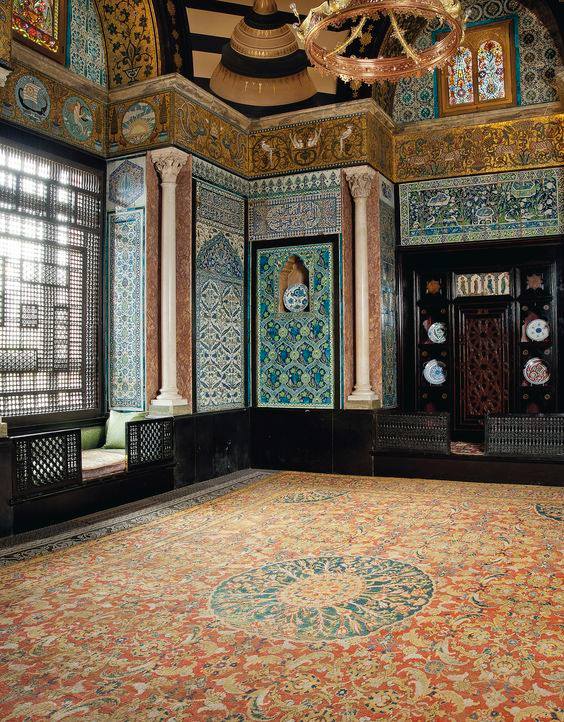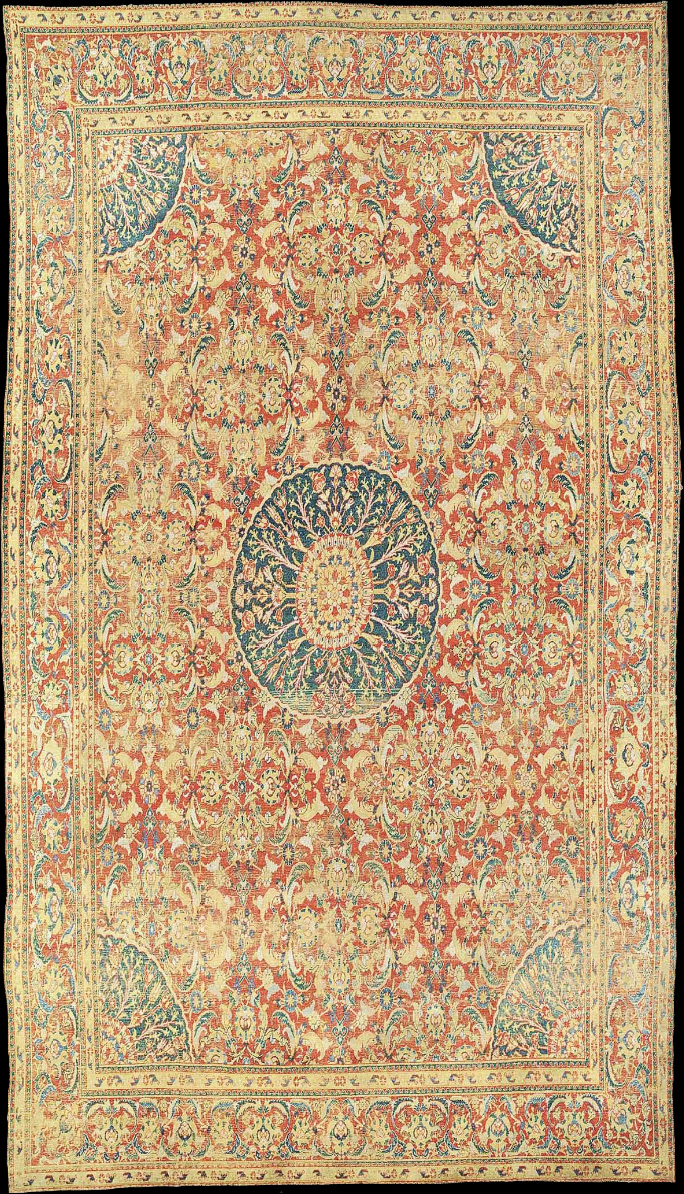|
A LARGE CAIRENE CARPET, EGYPT, OTTOMAN EMPIRE, SECOND HALF
16TH CENTURY
Price Realized $199,867
Estimate
$89,640 - $119,520
Sale Information
Christies SALE 10374
—
ORIENTAL RUGS AND CARPETS
21 April 2015
London, King Street
LOT NOTES
FEATURES
Localised wear, a few small repairs,
overall good condition
23ft.11in. x 13ft.6in. (727cm. x 410cm.)
Provenance: With the present owner since 1950
PROPERTY FROM A
PRIVATE SPANISH COLLECTOR
Lot Notes
The large central floral
medallion and rosette vinery border of this carpet reflect Sultan
Selim's imposition of Ottoman stylistic principles on Egyptian carpets
after he conquered Cairo in 1517. At that point, Turkish design
elements including spring flowers, palmettes and leafy floral vinery
in allover and medallion compositions, replace the geometric formalism
of Mamluk carpets previously in production in Cairo. The emergence of
this new style and its development has been the subject of
considerable study. The best introduction remains, E. Kuhnel and L.
Bellinger, Cairene Rugs and Those Technically Related, Washington
D.C., 1957, pp.41-64. It is generally accepted today that the earliest
examples of the group were made in Cairo, adapting the Ottoman design
aesthetic with traditional Mamluk materials and techniques. The very
earliest examples only used the three-colour Mamluk palette (see for
example lot 99 in The Bernheimer Family Collection of Carpets, sold in
these Rooms, 14th February 1996), but by the mid-16th century a number
of other colours had been introduced. Notable among these were second
tones of both blue and green used independently of each other, black,
ivory and yellow, Walter Denny, "The Origin and Development of Ottoman
Court Carpets", Oriental Carpet and Textile Studies II, London, 1986,
pp.243-259.
The field design of the present carpet is typical
of one sub-group where the medallion and spandrels are superimposed on
an endless repeating field of palmettes and saz leaves. Serare Yetkin
discusses this in her study on Turkish carpets (see S. Yetkin,
Historical Turkish Carpets, Istanbul, 1981, pp.101-127; also W. Denny,
'The Origin and Development of Ottoman Court Carpets', Oriental Carpet
and Textile Studies II, London, 1986, pp.243-259). The same clarity of
drawing in both the border and field design of the present lot can be
found on an extremely similar example offered in these Rooms by Davide
Halevim, 14 February, 2001, lot 54.
This carpet is remarkably
well preserved and it is a type which so very often only survives in
an extensively worn or heavily restored condition. The typically soft
wool is very susceptible to wear and has therefore been very
substantially repiled in most examples. One typical example was sold
by Christie's on the premises at Hackwood House (20-22 April 1998, lot
1118). Of similar palmette and saz leaf field design; that carpet had
very little of the original red pile visible. A further comparable
carpet is in the Textile Museum, Washington (Ernst Kuhnel and Louisa
Bellinger, Cairene Rugs and Others Technically Related, 15th
Century-17th Century, Washington D.C., 1957, no.R 1.126, p.43 and
pl.XXIII). Both the Hackwood and the Textile Museum carpets differ
from the present lot in their inclusion of cintamani stripes
interwoven amongst the Turkish flowers within the medallion and
spandrels. A carpet with a closely related medallion and spandrel
design to ours was formerly in the James F. Ballard Collection and is
now in the Metropolitan Museum of Art, New York (M. S. Dimand, and J.
Mailey, Oriental Rugs in the Metropolitan Museum of Art, New York,
1973, fig.190, no.107).
Like their Mamluk counterparts, very
few Ottoman Cairene rugs appear to have been depicted in Western
paintings, perhaps because of their complex patterning and muted
coloration. This is not to say that they weren't extremely popular
with European collectors in the late sixteenth and early seventeenth
centuries, and many appear listed in European collection inventories
of the period (Donald King and David Sylvester, The Eastern Carpet in
the Western World from the 15th to the 17th Century, London, 1983,
p.79).

Leighton House Museum

|


